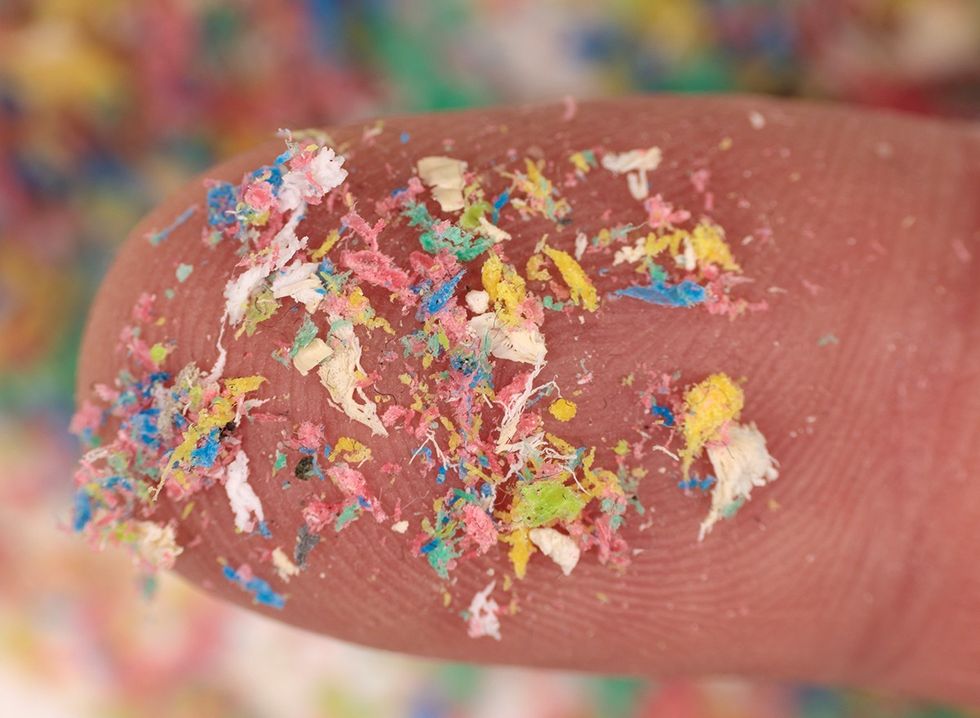Are you still using plastic containers to heat up food in the microwave? If so, you might want to rethink it. “Microwaving in plastic heats up the dish as well as the food item,” Phoebe Stapleton, PhD, associate professor in the Department of Pharmacology and Toxicology at Rutgers University, tellsFood & Wine. “This increased temperature allows for the chemicals within the plastic dish to be released into the food being reheated.” Here’s why blasting plastic in the microwave is bad for your health.
RELATED: The 6 Most Dangerous Foods to Microwave.
Dangers of Nanoplastics
Shutterstock
Microplastics can negatively impact health, experts warn. “It may not be immediately detrimental, but continued use increases exposure and dosage to chemicals that have demonstrated risk for disease including cancers, endocrine disruption and fertility issues, and metabolic and neurological disease,” Stapleton says.
Plastics In the Body
Shutterstock
Those tiny plastic particles released from containers build up in the human body. “Recent studies have found these plastic particles in human tissues that they certainly do not belong in, including the brain, heart, placenta, and testicles,” Jordan Kuiper, PhD, epidemiologist and assistant professor in the George Washington University Milken Institute School of Public Health, tells Food & Wine. “For chemicals used as plasticizers during the production of plastic products, they tend to be classified as endocrine-disrupting chemicals, those chemicals which are capable of interfering with hormones in the human body.”
What About Microwave-Safe Plastic?

Plastic marked ‘microwave-safe’ isn’t necessarily safer. “Despite the stable chemical structure of plastic products, however, chemicals can leach from plastics under certain conditions, including exposure to high temperatures such as those experienced during microwaving,” Kelly Johnson-Arbor, MD, a toxicologist at MedStar Health, tells Food & Wine. “Microwaving can also enhance the release of tiny plastic particles called microplastics into foods and drinks.”
Environmental Issues
Shutterstock
Single use plastics are terrible for the environment as they don’t just break down. “We want to get rid of terrible plastics in our transdisciplinary projects, our hospitals, and our patients’ lives,” say Eşref Demir, an HMS visiting professor of dermatology at Massachusetts General Hospital, and Fatma Turna Demir, an HMS research fellow in neurosurgery at Mass General. “Find strategies to segregate and recycle plastic medical waste. Review the use of plastic, especially single-use plastics, and synthetic textile products.”
RELATED: Are Plastic Cutting Boards Safe?
Plastics Are Everywhere

Even if you’re not microwaving plastics, they are still rife in the environment and your home. Avoid drinking from disposable plastic water bottles,” says the EWG. “If you have no choice, try to keep them out of the sun, in a cool, dry environment. Disposable plastic water bottles degrade very easily in response to temperature change or friction.”
Limit Plastic Exposure

Limit your exposure to plastics as much as possible—for example using stainless steel instead of plastic for a thermos. “I don’t want to demonize plastics; they’re quite important,” says Jaime Ross, PhD, a neuroscientist and assistant professor at the University of Rhode Island College of Pharmacy. “But do we really need our vegetables wrapped in plastic at the grocery store? Let’s have a conversation about what we really need plastic for.”



